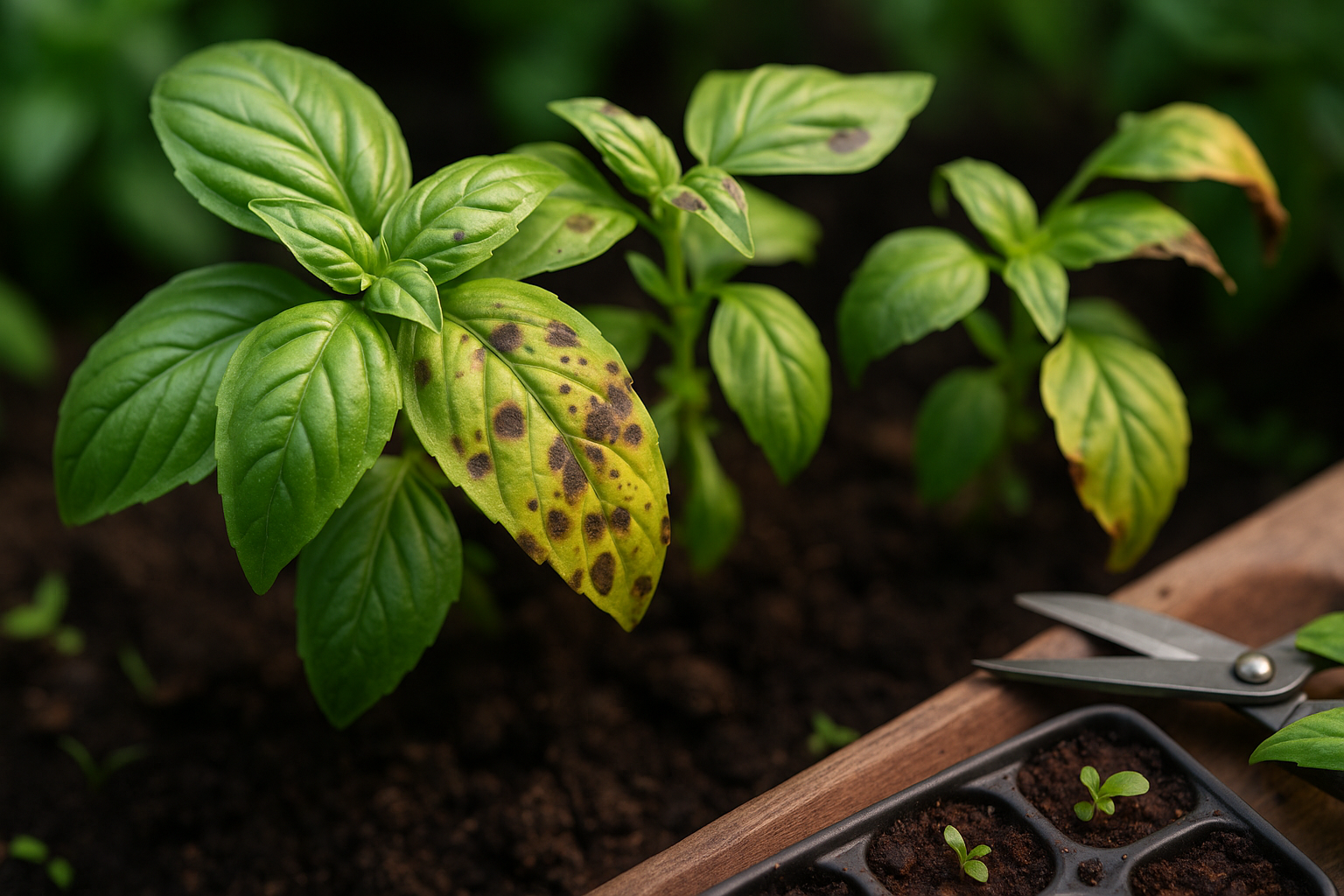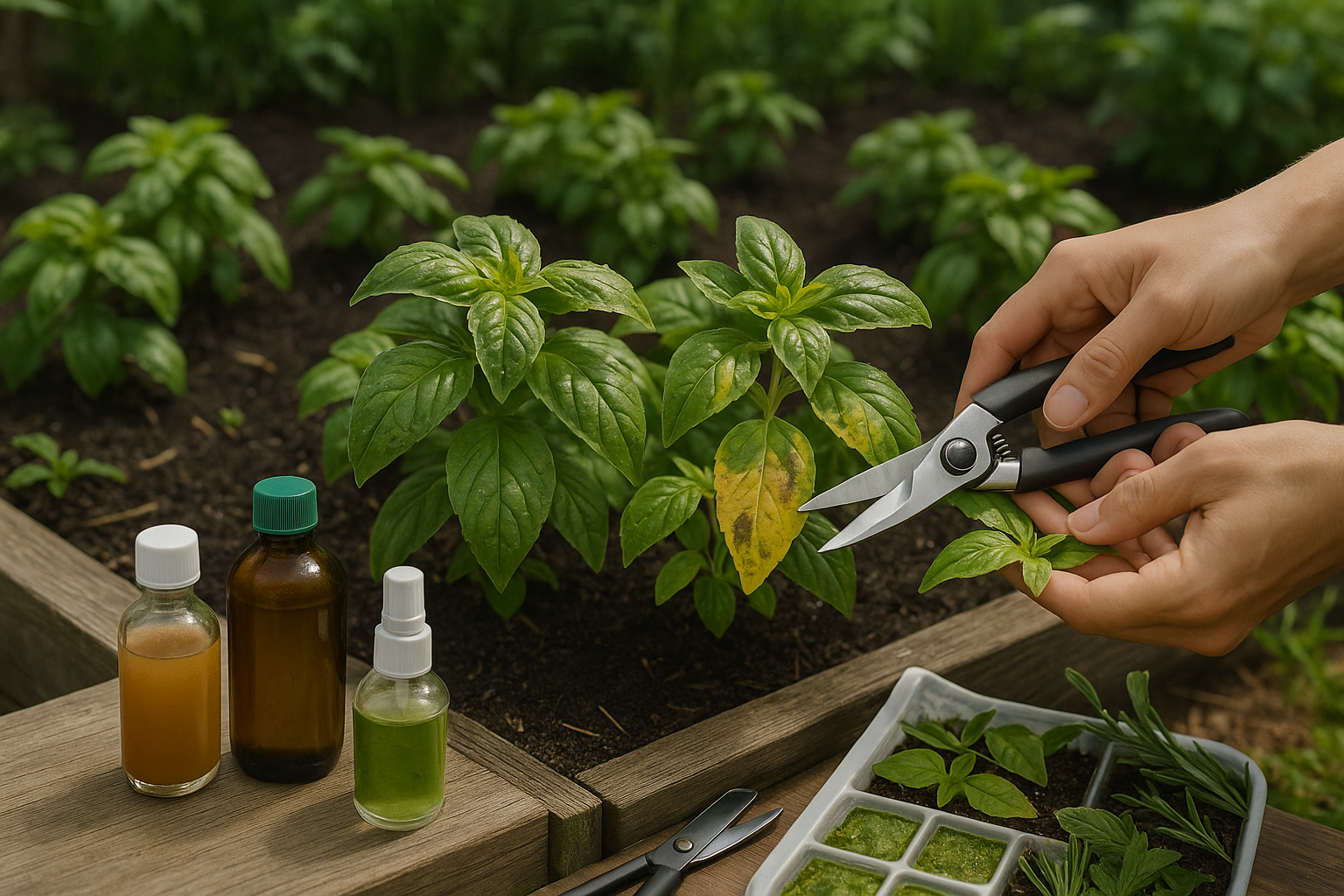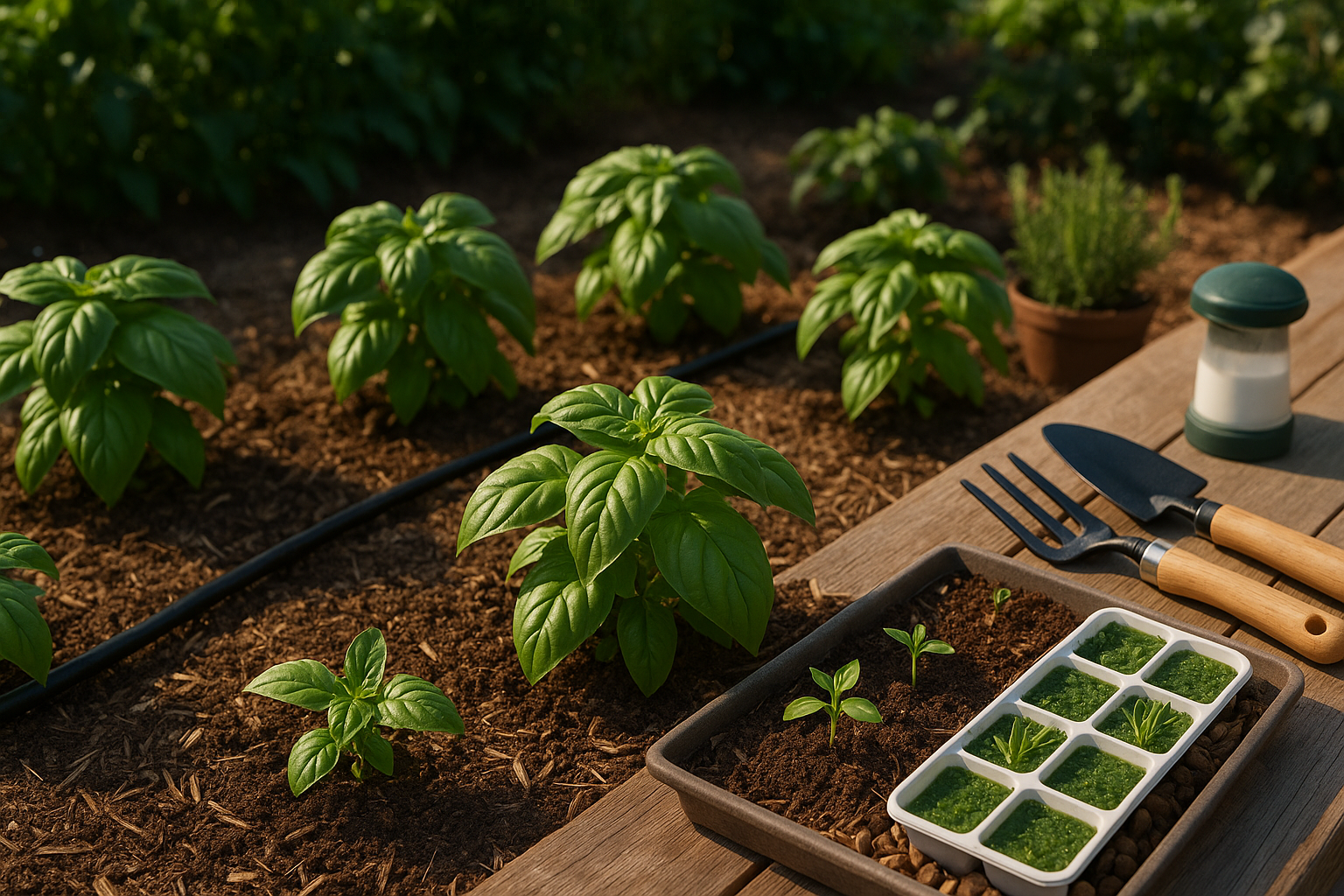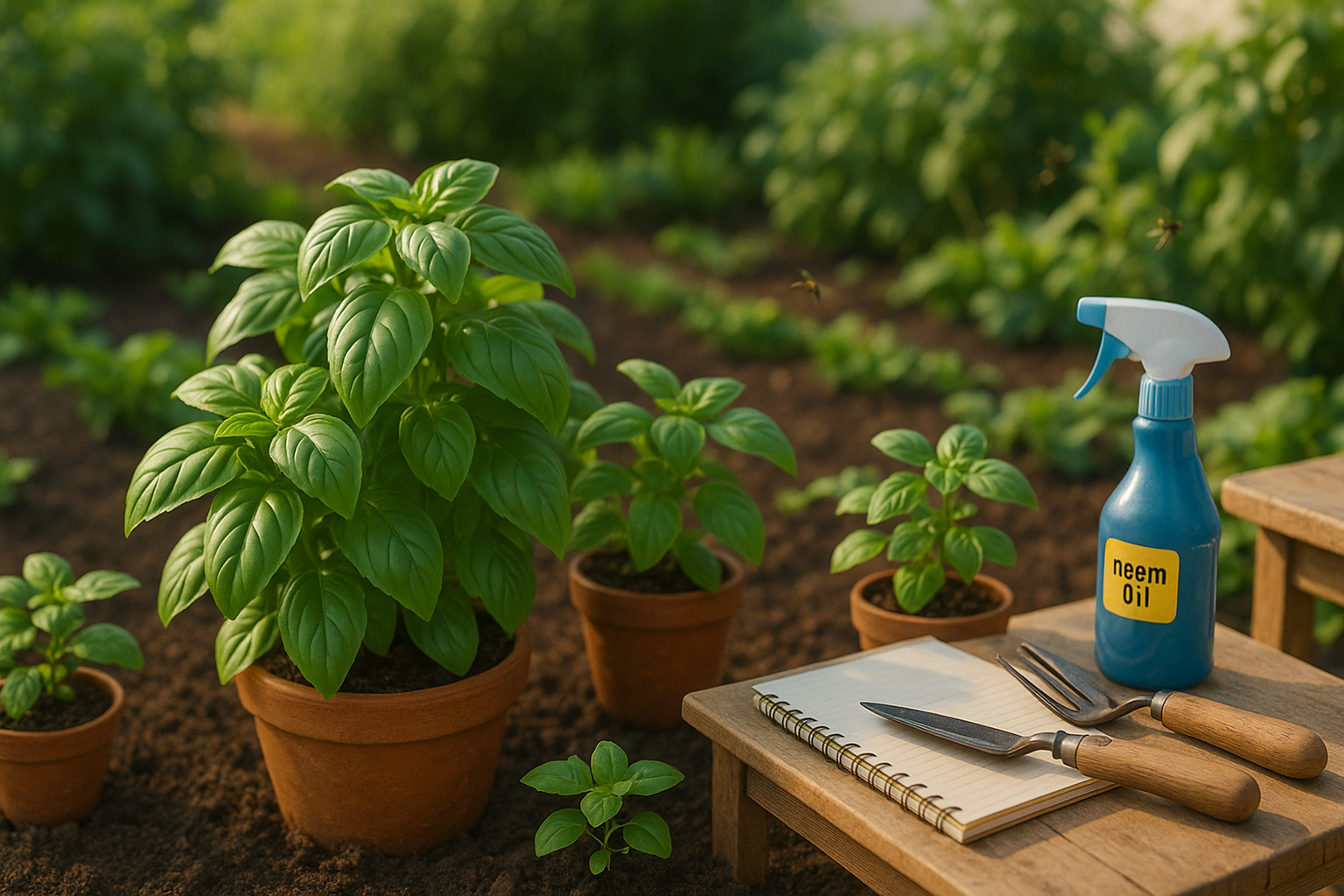Introduction to Basil Diseases
Basil disease treatment is a crucial topic for anyone who loves growing this fragrant herb, whether you’re a home gardener or someone who enjoys fresh basil in the kitchen. Basil is famous for its vibrant aroma and flavor, making it a staple in gardens and recipes worldwide. However, even the most robust basil plants can fall prey to a range of diseases—think black spots, wilted leaves, and mysterious yellowing—that can put your harvest at risk.
For small-scale growers, seeing your basil plants struggle isn’t just frustrating; it can mean fewer delicious meals and wasted effort. Understanding how to spot the early signs of trouble and learning effective basil disease treatments makes all the difference.
In this guide, we’ll help you identify the most common basil diseases and share practical, proven tips for restoring your plants’ health so you can enjoy basil’s fresh flavor all season long.
Signs Your Basil Plant Is Sick

When your basil plant starts looking under the weather, knowing which signs point to disease can make all the difference.
Watch for wilting leaves even when the soil is moist—this often signals root rot or a fungal infection, not just a thirsty plant.
Yellowing leaves can be tricky; while a few yellow bottom leaves are normal as old foliage drops off, widespread yellowing or patches alongside brown spots suggest a bigger problem like downy mildew or bacterial leaf spot.
Keep an eye out for black or brown spots, fuzzy growth, or unusual lesions, as healthy basil leaves should be a consistent, lush green.
If your plant is stunted or new leaves emerge misshapen or curled, that often signals viral infections or pest damage, rather than the gentle slowing down that comes with cooler weather or brief neglect.
Sometimes basil gets droopy from transplant shock or a dry spell, but persistent deformities or discoloration usually mean disease.
Catching these signs early is key: prompt action—removing affected leaves, improving airflow, or adjusting watering—can often save your plant and stop diseases from spreading, giving your basil a fighting chance to bounce back.
Common Basil Diseases (with Identification Tips)
Basil plants, beloved for their aroma and flavor, can fall victim to several common diseases.
Fusarium wilt is a major threat, first showing as drooping leaves and stunted growth. Over time, stems may turn brown, and the entire plant can collapse. One telltale sign is brown streaks inside the stem when cut open.
Another widespread issue is downy mildew, which starts as pale yellow patches on the upper leaf surface. Flip the leaf over, and you’ll often spot fuzzy gray or purple mildew on the underside—humid conditions make it much worse.
Bacterial leaf spot typically appears as dark, water-soaked spots with a yellowish halo, especially after rainy weather. These spots eventually turn brown, causing leaves to drop off.
Other culprits include gray mold (Botrytis), which causes fuzzy, grayish growth on stems and leaves, and root rot, often marked by blackened, mushy roots and sudden wilting despite moist soil.
For quick diagnosis, check the pattern and color of spots, any fuzzy or powdery growths, and whether symptoms start on old or new leaves.
A healthy basil plant should have vibrant, unblemished leaves and upright stems. Catching anything unusual early—like yellowing, abnormal spotting, or wilting—can help you take action fast.
If you’re unsure, isolate the affected plant to prevent disease spread while you investigate further.
Regularly inspecting your basil, especially after rain or during hot, humid spells, is the best way to nip problems in the bud before they ruin your harvest.
Treatment and Management Strategies

Effective treatment and management of major plant diseases start with early detection and swift action. For fungal infections like powdery mildew or blight, prune away and dispose of infected leaves or branches—never compost them, as this can spread the disease. Fungicides, such as copper-based sprays or neem oil, can help control outbreaks, but always follow label instructions and rotate products to prevent resistance.
For bacterial diseases, remove affected parts and consider bactericides like copper sprays, though good cultural practices are often the most reliable defense. Organic gardeners can opt for treatments like baking soda spray for mildew or compost tea to boost plant defenses.
Improving airflow by spacing plants correctly and thinning crowded areas reduces humidity, which helps prevent disease. Adjust watering habits to keep foliage dry—water at the base in the morning, using drip irrigation or soaker hoses instead of overhead sprinklers. Mulching can also limit soil splash and reduce the spread of soil-borne diseases.
Keeping tools clean by disinfecting them between cuts or after working with sick plants is a simple but essential hygiene step. Remove plant debris promptly at the end of each season to eliminate overwintering pathogens. Cultural controls, like rotating crops and planting disease-resistant varieties, further reduce risk. For repeated problems, consider solarizing soil to kill harmful microbes before planting.
Combining these methods—especially staying vigilant about plant hygiene and acting quickly at the first sign of trouble—will give your garden the best defense against destructive diseases, minimizing losses and supporting long-term plant health.
Preventing Basil Diseases (Proactive Care)

To keep your basil healthy and disease-free, start by practicing crop rotation — avoid planting basil or other mint family herbs in the same spot each year. This helps reduce lingering disease pathogens in the soil. Always use clean, disease-free seeds to prevent problems right from the start.
Choose a planting location with well-drained soil, as soggy conditions invite root rot and fungal infections. Water your basil at the base rather than overhead to keep leaves dry and discourage the spread of diseases like downy mildew. Space your plants adequately to allow for good air circulation; overcrowded basil creates the humid, stagnant environment that diseases love.
Remember to regularly sanitize your gardening tools — dirty pruners can transfer bacteria and fungi from one plant to another. Make it a habit to inspect your basil routinely for any signs of spots, wilting, or mold; catching problems early makes treatments much more effective.
For even greater peace of mind, seek out disease-resistant basil varieties, such as ‘Nufar’ or ‘Amazel’, which are bred specifically to withstand common threats like Fusarium wilt and downy mildew. By layering these simple, proactive steps, you’ll have a much better shot at harvesting lush, flavorful basil all season long.
When to Replace and Restart
Knowing when to remove and discard infected basil plants is key to stopping the spread of disease. If you notice dark, soggy spots on leaves, fuzzy growth, or a sudden wilt that doesn’t bounce back after watering, it’s best to uproot the affected plants immediately.
Don’t compost them—diseases can survive, so bag and trash the plants instead. After removal, clean up any fallen leaves and debris around the area.
To prevent future outbreaks, sanitize your tools with a solution of one part bleach to nine parts water. Consider sterilizing the soil by letting it dry out in the sun or replacing it, as pathogens can linger in dirt.
Take note of what went wrong—overcrowding, poor airflow, or watering at night are common culprits. Learning from each season helps you build stronger habits, so your next basil crop stays healthier and more resilient.
